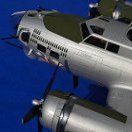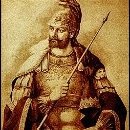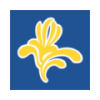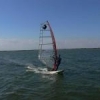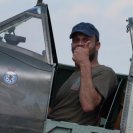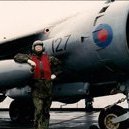Search the Community
Showing results for tags 'Me-109'.
-
Evening folks, With the summer holidays here, there's been some welcome additional modelling time and this was finished off over the weekend. I was given this by my dad who had in turn been given it by an old family friend - I think it is an original issue, and if not it's a very early issue of this classic kit from Airfix: I just wanted to build this more or less as it comes and enjoy it. However, I couldn't let the gaping hollow wheel bays pass so made some simple mods by adding plastic card sidewalls and some Evergreen stiffeners to at least make them sort of passable: Other than that, I used some Eduard belts for the pilot's seat, Barracuda wheels as the kit's had dried out and cracked when I tried to apply them to the hubs, and some aftermarket decals from Techmod to represent Von Werra's machine who crash-landed not far from me in Marden, Kent - and became 'the one that got away'. Although old and basic by modern standards, this kit is a joy and went together pretty well. Surface detail is sublime and the super-detailer could really have a field day if they were so inclined. I really enjoyed it as nostalgic build from days gone by and that's what it's all about! Evolution: here is the 109E alongside the G-model: like the Spitfire the basic airframe had huge potential to evolve and did so as the war progressed: Paints were all Xtracolor enamels with some weathering using Mig-Ammo pastels. A really enjoyable build - don't overlook these oldies as they scrub up really well! All the best, Tom
- 39 replies
-
- 84
-

-

-
As if time froze. In the early 70's, as a kid, I used to look in the window of a bookstore in a suburb of Athens, the boxes with the terrible representations of battles and starring planes and tanks. The bright colors and the realistic images, to visualize the stories of the elders, from the Greco Italian war, the victorious battles of the Greek army in the mountains of Pindos and Albania, the Nazi invasion, the collapse of the front, the Occupation, the great famine, the executions of civilians, in my grandfather's village and all the brave acts of resistance. The mystery of the contents of the boxes was soon solved when a friend opened one and tentatively built a plane. Since then, my life has literally changed. I have been involved in the hobby for over 45 years. I acquired and built several models, I destroyed more, many of them are waiting unfinished in boxes. But the acquisition and construction of those first kits that I was fooling around with as a child was repulsed. Most of them were matchboxes. [to be continued]
-
Afternoon BM's. The Christmas Break has enabled me to complete some models that have been on the go for a while now. This one is Airfix's recent tooling of Messerschmitt's BF 109-E3 from the Battle of Britain 75th Anniversary set: Not a lot to say about this one other than that I added rivet detail (which although a bit drunk, I've now got a nearly fool-proof method), painted the engine, posed with the flaps down and added a swastika decal for period accuracy. As this was from a gift set, the decals were minimal compared to a previous Emil I have already done but that meant it was far quicker to complete that part for a change . Hope you enjoy, comments, questions, critique always welcomed. James. Pared with one of my very early attempts of the same kit:
- 12 replies
-
- 21
-

-
So.. just finished Polikarpov I-152 (I-15bis) http://www.britmodeller.com/forums/index.php?/topic/234992236-polikarpov-i-152-148-special-hobby/ And I decided to start a new project. At this time in the contest "Out of the box" on the site http://scalemodels.ru/modules/forum/viewforum_f_191.html Messerschmitt Bf-109E Airfix on a scale of 1/48. It will be modification Bf- 109E1 of the Legion "Condor" during the Spanish company.
- 17 replies
-
- 2
-

-
- Airfix
- Messerschmitt
-
(and 8 more)
Tagged with:
-
Walk around, This is my version of the Airfix kit, there may be some dispute over the colours I used! It was painted with tamiya paints and weathering sets. Pretty much from the box, I just added aileron trim tabs and fixed the wing root fillet using plastic sheet. Xtradecal swastika. It is not a new build but I'm new here. This is my first aircraft "ready for inspection"
- 28 replies
-
- 14
-

-
Messerschmitt Me-109 G-6 Revell 1:32 The G series, or "Gustav", was introduced in mid-1942. Its initial variants (G-1 through G-4) differed only in minor details from the Bf 109F, most notably in the more powerful 1,455 HP DB 605 engine. Odd numbered variants were built as high-altitude fighters with a pressurized cockpit and GM-1 boost, while even numbered variants were non-pressurized, air superiority fighters and fighter-bombers. Long-range photo-reconnaissance variants also existed. The later G series (G-5 through G-14) was produced in a multitude of variants, with uprated armament and provision for a number of kits of pre-packaged, generally factory- installed parts known as Umrüst-Bausätze (usually contracted to Umbau) and adding a "/U" suffix to the aircraft designation when installed. Field kits known as Rüstsätze were also available for the G-series but those did not change the aircraft designation.) By early 1944 tactical requirements resulted in the addition of MW-50 water injection boost and high-performance superchargers, boosting engine output to 1,800–2,000 PS (1,775-1,973 HP). From early 1944 a number of G-2s, G-3s, G-4s and G-6s were converted to two seat trainers, known as the G-12. An instructor's cockpit was added behind the original cockpit and both were covered by an elongated, glazed canopy. The so-called Rüstsätze field modification kits and Umrüst-Bausätze factory conversion kits were part of a system promulgated by the RLM as a whole, throughout the German military aviation industry, with each airframe type number having its own set of "/R" and/or "/U" numbered designations for such upgrade packages. The Model Revell last released a new tool Me-109G-6 back in 1987 which was an ok kit for its day. Now they have released a brand new tooling of this great aircraft and boy does it look good. The kit unfortunately comes in the standard end opening and slightly feeble box with the parts protected in a couple of poly bags. The kit comes on three large and eleven small sprues of light grey styrene as well as two sprues of clear parts. All the parts appear very well moulded with only a very small amount of flash on a couple of the smaller sprues but quite a few moulding pips throughout. Detail is very nicely done with fine recessed panel lines, raised areas where necessary, finely executed rivets and fasteners and restrained detailing on the fabric covered control surfaces. The styrene is quite soft so be careful when removing parts and cleaning them up. Any ejection pin marks are thoughtfully placed in concealed areas. There are small sink marks in each of the propeller blades near the roots, nothing a small amount of putty and a quick swipe with a sanding stick can’t sort out. Construction starts with the cockpit floor, onto which the rudder pedals and foot rests are fitted. Then there is a choice to make on which cannon the aircraft is fitted with, and therefore which breech cover to build. The instructions state that the Early version was armed with the Mk108 30mm cannon and the Late version was armed with the MG-151/20 20mm cannon. Now from research it looks like it should be the other way round so it may be an idea to just check before building your particular aircraft you are modelling. With the choice made, the two halves of the respective breech cover are joined and fitted to the front of the cockpit floor, onto which the joystick is also attached. The cockpit is further built up with the attachment of the pilot’s seat to the rear bulkhead. The pilots harness is pre-moulded onto the seat pan and the bulkhead, with the bulkhead ones being slightly too short and will need to be lengthened or replaced completely with aftermarket items. Rather than having parts moulded onto the insides of the fuselage halves Revell have gone for separate panels for the cockpit sides onto which further parts are added. On the starboard side the clear part that represents the fuel feed pipe is to be masked off before painting so that the inspection tube is left clear, beneath the fuel pipe the fuel pump is fitted. On the port side there are a pair of trim wheels and control runs attached. The instruments dials for the panel are in decal form but with some softener/setting solutions they should settle down ok onto the individual bezels. There is another Early/Late option when it comes to fitting the gun sight which is fitted to the top right of centre on the instrument panel. The cockpits side panels and instrument panel are then attached together with the cockpit floor and rear bulkhead creating a neat looking tub. Underneath the tub the wing spar is attached, whilst on top the rear upper bulkhead is fitted, with a choice of early or late depending on the position of the battery box. With the cockpit complete several other assemblies need to be built up before the fuselage can be closed up. The tail wheel has optional long and short struts as well as different fairings, depending on which version is being built. This also goes for the upper nose cowling with alternative parts, both of which need to have the machine gun muzzles fitted from the inside before attaching to the fuselage. The engine exhaust stacks also need to be fitted from the inside pre painted and masked of before full painting commences. The exhausts are a little bit disappointing in that they are solid and will need some very careful opening up due to their shape. There’s bound to be some aftermarket items released soon to replace these. Once the cockpit tub, propeller shaft, tailwheel and under nose radiator mount are fitted the fuselage can be closed up. The three nose panels are then fitted with an alternative panel for the starboard side. The two piece carburettor intake on the port side is then fitted along with the cowl bulges, again with alternative parts for each version. Under the nose the two radiator grilles are fitted onto their mounting points before the radiator cover is fitted. The wing radiator grilles are attached to the upper inner wing panels which are then attached to the wing spar. Each main undercarriage bay is has the roof part moulded into the inner panels whilst the bay walls are made up of three separate parts. The one piece lower wing panel is then fitted to the upper inner wing panels and spar. While the model is upside down the two wing radiators have the forward intake lips added and two panels are fitted to the centre fuselage. With the model the right side up the upper outer wing panels are attached and the vertical tail unit is fitted, the modeller has the option of short or tall tails depending on which version is being modelled along with the relevant rudders. The rudder trim actuator is then attached to the starboard side of the fin and the horizontal tail assemblies are, with option moving elevators are fitted. The model comes with the option of having the flaps posed up or down with each section being made up of upper and lower halves as do the ailerons. The inner and outer flaps of each wing are attached as per the modellers wishes after which the ailerons can be fitted. The leading edge slats can also be posed open or closed, but being spring loaded they would normally be deployed on the ground. The main undercarriage legs are each made up of an inner and outer oleo parts onto which the axle unit is attached along with the scissor links and a small link near the top of the inner oleo. The main door is then attached to the oleo. There are two types of main wheels and tyres, again depending on which version is being built. Each tyre is in two halves into which the inner and outer hubs are fitted. The details are quite nice, one with radial tread and one with a block tread, but these may get a little lost with having to sand the seam around the tyre unless fitted well. With the wheels assembled they can be fitted to the axles. The two part tail wheel is then fitted to its yoke. Next in the build sequence is the assembly of the drop tank. Whilst he details on the tank are quite good it does seem a little pointy in the nose area and should be blunter. This may be rectified with a little surgery or sanding but most people will be able to live with it. The completed drop tank is then fitted to the adaptor plate and the four stays are fitted. The whole assembly is then fitted to the fuselage centreline. Depending on the version being built there are a number of different parts to be fitted before the canopy can be fitted. There are two types of canopy, an early framed type with separate rear section and a single piece Erla Haube clear view canopy. The windscreen comes with separate armoured screen which would be best “glued” with a drop of Klear or similar. With the aerial masts fitted to the rear of the canopies the relevant armoured plate can be fitted internally along with the locking handle. If the canopies are to be positioned open there are two blocks on the starboard cockpit side panel to provide a good strong joint. The propeller is now assembled out of the backplate, three individual blades, internal blade clamp and the boss. Unfortunately the join between the backplate and boss isn’t at a natural panel line on the real aircraft so will need to be carefully filled and sanded. The propeller assembly is then fitted onto the propeller shaft. With the addition of the pitot probe and underwing aerial for the late version, all that needs to be done is paint and adding a stretched sprue aerial wire for the model to be complete. Decals The decal sheet is printed in Italy for Revell, so presumably by Cartograph, although they don’t look up to the usual standard. They are well printed though, in good register and nicely opaque with very little carrier film except in the white outline crosses and the kill markings. The decals are quite matt in appearance but should settle down well with the appropriate solutions. There is only one option for each version and these depict the following:- • Bf-109G-6 W.Nr. 160717, Stab II/JG-51, Rumania 1944 flown by Hauptman Karl Rammelt • Bf-109G-6 W.Nr. 411960, Stab III/JG-5, Gossen May 1945, flown by Hauptman Franz Dorr. Conclusion This is a very nice kit and while there a few little inaccuracies I’m sure it will be a very enjoyable build and from what I’ve heard the part fitment is very good. Apparently this kit can be easily modified into a G-14 variant, but you have to resarch this yourself. Revell these days seem to excel in producing great large scale kits at a very affordable price, and this one is no different. It doesn’t matter that it doesn’t come with all the bells and whistles as it isn’t made for the experienced modeller, even though I’m sure they’d love this as a nice quickish build. This mark is in my opinion the best looking of the Me-109 series and a model of which I can highly recommend. Revell model kits are available from all good toy and model retailers. For further information visit
-
Messerschmitt Me109 G-10 Revell 1:32 The history of the Me-109 is written large all over the web and also included in the earlier review of the Revell Me109G-6 release, HERE, so I won’t go repeating it. As it is, its relevant to post the differences between the two aircraft as far as I can ascertain. In the Reich Luft Ministerium (RLM) vision, the G6 was designed to be the last version of the Gustav to be ever produced. Consequently, as early as 1943, Messerschmitt started working on an improved 109, the K. The K was essentially a refined G6 with emphasis on improving the aerodynamics, flight controls and cockpit ergonomics. There was no engine limitation and as with the G, a wide selection of versions powered with the DB605A & D families were forecast. Implementation differed from design, however, and in the spring 1944, the G6 was still the only 109 mass produced. It had evolved a bit from the first G6 produced, having seen the following changes: • Erla Haube • Glass head armour • DB605AS • DB605AM • Tall metal tail & Rudder • Tall wood tail & Rudder • Tall tail wheel • MW-50 Water-methanol over boost • MK108 axial canon Most of the above became standard as production continued. Because of these delays and other new high performance fighters entering mass production (Ta152, Fw190D, Me262), the conversion of all existing factory lines to the K production was meaningless. Having developed the type for some time, Messerschmitt was however allowed to switch from the G6 to the K4 as soon as possible. Sometime during June 44, a new interim version of the G was planned. It was supposed to incorporate the latest equipments found on the G6 and K4 (Erla Haube, tall tail, tall tail wheel, Fug 16ZY & MW-50) and to be powered by the same DB605D. The version number was the first available for unpressurized planes: G10. The aim of this new version was to provide a K4-level fighter without retooling existing production lines and to use up the massive stock of G6 components. The plan was to have the 2 licensed factories (Erla and WNF) switch to the G10. However, the lack of DB605D prevented the G10 and the K4 from becoming a reality for months to come. Externally, the G10 airframe was identical to the G6-MW50. It had the Erla canopy, the tall tail wheel, the extra hatch on the right side to refill the MW50, the Morane antenna and the “battery box” behind the head armour. As with many aircraft there is a lot of misidentification through the series due to different manufacturers adding their ideas. Erla manufactured G10s are one of these, and have been often referred as G10/AS in the past. A properly integrated flat panel replaced the previous faired panel on the port side, sometimes known as the “moon” fairing. The engine cowls were also different, in that they covered the nose without the requirement for chin bulges along with a different oil cooler which was slimmer yet larger than that used on the K4, and was probably designed for the H version. The Erla solution for covering the DB605D was much more elegant and streamlined. They were the only manufacturer to use this possibly due to the fact that the tooling had been pre deigned and built in preparation for building the H model. Since Erla started the G10 production quite early, the first a/c still used G6 wings with “small” wheels and the Erla canopy with antenna mast. Later, Erla used the same new wing with larger wheels as the other manufacturers. The Model Obviously based on the earlier release it comes with all the new parts to produce a G-10 such as the tall tail wheel, upper cowlings, aerial mast, taller fin and rudder. Instead of using the G6 fuselage and changing the side panels, they appear to have moulded a completely new one with the panel moulded integrally. The moulding of the fourteen sprues is, as you would expect of a modern release, really very nice. No sign of flash or moulding imperfections on any part and just a few moulding pips to remove and clean up. Details such as the engraved panel lines and rivets are very refined. The styrene appears quite soft and yet eminently workable so the modeller shouldn’t need to break a sweat when cleaning up the joins. Construction starts with the cockpit floor, onto which the rudder pedals and foot rests are fitted. Unlike the G6 there is only one choice of breech cover, and that is for the Mk108 30mm cannon with the two halves joined and fitted to the front of the cockpit floor, onto which the joystick is also attached. The cockpit is further built up with the attachment of the pilot’s seat to the rear bulkhead. The pilots harness is pre-moulded onto the seat pan and the bulkhead, with the bulkhead ones being slightly too short and will need to be lengthened or replaced completely with aftermarket items. Rather than having parts moulded onto the insides of the fuselage halves Revell have gone for separate panels for the cockpit sides onto which further parts are added. On the starboard side the clear part that represents the fuel feed pipe is to be masked off before painting so that the inspection tube is left clear, beneath the fuel pipe the fuel pump is fitted. On the port side there is a pair of trim wheels and control runs attached. The instruments dials for the panel are in decal form but with some softener/setting solutions they should settle down ok onto the individual bezels. The gunsight is then attached to the top of the instrument panel. The cockpits side panels and instrument panel are then attached together with the cockpit floor and rear bulkhead creating a sturdy and rather good looking tub. Underneath the tub the wing spar is attached, whilst on top the rear upper bulkhead is fitted, along with the battery box. With the cockpit complete several other assemblies need to be built up before the fuselage can be closed up. The long tail wheel strut is fitted into position along with the propeller shaft and oil cooler panel. The engine exhaust stacks also need to be fitted from the inside pre painted and masked of before full painting commences. The exhausts are a little bit disappointing in that they are solid and will need some very careful opening up due to their shape. There’s bound to be some aftermarket items released soon to replace these. Once the cockpit tub, propeller shaft, tailwheel and under nose radiator mount are fitted the fuselage can be closed up. The new upper nose panel is fitted with the machine gun barrels and affixed into position, followed by the two piece carburettor intake to the port side. Under the nose the two radiator grilles are fitted onto their mounting points before the radiator cover is fitted. The wing radiator grilles are attached to the upper inner wing panels which are then attached to the wing spar. Each main undercarriage bay is has the roof part moulded into the inner panels whilst the bay walls are made up of three separate parts. The one piece lower wing panel is then fitted to the upper inner wing panels and spar. While the model is upside down the two wing radiators have the forward intake lips added and two panels are fitted to the centre fuselage. With the model the right side up the upper outer wing panels are attached and the vertical tail unit is fitted along with the rudder. The rudder trim actuator is then attached to the starboard side of the fin and the horizontal tail assemblies are, with the optionally posed separate elevators, fitted. The model comes with the option of having the flaps posed up or down with each section being made up of upper and lower halves as do the ailerons. The inner and outer flaps of each wing are attached as per the modellers’ wishes after which the ailerons can be fitted. The leading edge slats are also fitted at this point and can also be posed open or closed, but being spring loaded they would normally be deployed on the ground. The main undercarriage legs are each made up of an inner and outer oleo parts onto which the axle unit is attached along with the scissor links and a small link near the top of the inner oleo. The main door is then attached to the oleo. Each tyre is in two halves into which the inner and outer hubs are fitted. The details are quite nice, but these may get a little lost with having to sand the seam around the tyre unless fitted well. With the wheels assembled they can be fitted to the axles. The two part tail wheel is then fitted to its yoke. Next in the build sequence is the assembly of the drop tank. Whilst he details on the tank are quite good it’s still a little pointy in the nose area and should be blunter. This may be rectified with a little surgery or sanding but most people will be able to live with it. The completed drop tank is then fitted to the adaptor plate and the four stays are fitted. The whole assembly is then fitted to the fuselage centreline. Unlike the previous release there is only one option of canopy, but Revell still provide two of them in case one gets damaged. The windscreen comes with separate armoured screen which would be best “glued” with a drop of Klear or similar. With the aerial masts fitted to the rear of the canopy the armoured plate can be fitted internally along with the locking handle. If the canopy is to be positioned open there are two blocks on the starboard cockpit side panel to provide a good strong joint. The propeller is now assembled out of the backplate, three individual blades, internal blade clamp and the boss. Unfortunately the join between the backplate and boss isn’t at a natural panel line on the real aircraft so will need to be carefully filled and sanded. The propeller assembly is then fitted onto the propeller shaft. With the addition of the pitot probe and underwing aerial for the late version, all that needs to be done is paint and adding a stretched sprue aerial wire for the model to be complete. Decals The decal sheet is printed in Italy for Revell, so presumably by Cartograph, although they don’t look up to the usual standard. They are well printed though, in good register and nicely opaque with very little carrier film except in each of the outline crosses. The decals are quite matt in appearance but should settle down well with the appropriate solutions. There two marking options provided:- Bf-109G-10 Erla W.Nr. 491446, flown by Major E Hartmann April 1945 Bf-109G-10 W.Nr. 152016 JG-300, Praha-Kbely AB, May 1945 Conclusion Revell should be very proud of themselves with these latest releases. They are beautifully moulded, appear quite easy to put together and have enough detail out of the box to satisfy most modellers. There is enough different in this release to be noticeable should the modeller have both versions, which of course you could since they are so reasonably priced. With the amount of aftermarket items released for the G-6 I can see the same happening for the G-10, so those modellers who want to gild the lily they shouldn’t have to wait long. Very highly recommended Revell model kits are available from all good toy and model retailers. For further information visit
-
Messerschmitt detail Sets Eduard/Brassin 1:32 Revell produced are cracking kit in their 1:32 Me-109G-6 particularly for the price, but it have some shortcomings and Eduard believe the detail also needed to be spruced up. With this in mind they have released a selection of sets for this kit, and an additional one for those modellers who would like to use the kit in a diorama. All these sets can be found in the Big Ed set or bought separately, it’s entirely up to the modeller to decide how much detail they would like or need to add. The relief etched brass is up to their usual high standards yet the instructions still let them down and really should be clearer on how parts are folded and fitted. Detail Set (32788) The two sheets contained in the standard poly sleeve provide parts for both the interior and exterior, so no need for separate sets. The majority of parts are on a medium sized relief etched sheet whilst the smaller sheet containing the cockpit parts is mostly pre-painted and self adhesive. For the cockpit the set includes a new seat support and panel for the rear bulkhead, new seat pan, a pair of very well detailed rudder pedals, trim wheel control chains and support bracket. The instrument panel is made up of several layers with the instruments printed on the backing plate, as other sets of this nature a drop of Klear or Aqua Gloss will be needed to represent the instrument glass. On the side walls there are several new or replacement instrument boxes and pre-printed faces, along with new cable runs and pipework. Each of the alternative gunsights receives new reflector glass supports, lens surround and brackets. Externally the set provides new radiator front and rear grids, a new intake grille, internal fittings for the radiator housings and main wheel bays; brake pipes and replacement lower undercarriage leg doors. The ailerons are given new end plates and the slats are provided with new internal lip strips. There is a nicely detail aerial mounting bracket on the tail fin and strap for the drop tank. Finally, each of the alternative canopies receive new armoured back plates and handles for the windscreen frame. Interior Zoom Set (33128) This zoom set contains only the above pre-painted sheet and allows the modeller to build a well detailed cockpit without the hassle of getting bogged down with detail that might otherwise be deemed superfluous. Tools and Boxes (32351) For those modellers that want to use their model in a diorama, whether in a workshop or on the line then this two sheet set will be just for you. The main part is the carry case, which, once folded to shape is fitted with four carry handles, two per side. Into this are fitted four shelves, two shallow ones for the general tools, such as spanners, snips, hammers, cutters and the like, (all provided), and too deeper ones in which the more specialist tools are held, all safely kept in place by various spacers and locking parts. Also included is a large tool roll, which when assembled and painted up should look great lying on a wing on the grass by the aircraft. The roll is also well populated with the more popular tools such as screwdrivers, cutters, rule, adjustable spanners etc. Seatbelts (32784), and (32791) These two sets of seatbelts give more choice to the modeller, they can either buy the all etched brass set, which is pre-painted and go through the process of annealing to make them more flexible to sit in the seat pan correctly, or go for the fabric ones which should sit more naturally. Both sets come with a full selection of buckles and clasps and whilst whilst quite fiddly to assemble they will really help make the cockpit stand out from the crowd. Brassin Wheel Set (632 018) In addition to the etched sets Eduard, in their Brassin range have also released this set of replacement resin wheels. The inner and outer hubs, plus the tyres are all separate, making painting so much easier. Detail is also enhanced with the tread looking very nice and the brake details more representative. Once removed from the moulding blocks it shouldn’t take to much cleaning up before they are ready for use. Conclusion This is another great selection of sets from Eduard, who seem to be churning them out like it was going out of fashion, yet keeping the standard high. The tool box set is my favourite and I hope they produce more diorama sets in the future. The rest of the sets will go towards making the finished model look top notch, particularly when the Brassin wheels are used as well. Review sample courtesy of
-
Revell's BF-109 G-10 painted to represent Ex Luftwaffe Ex Croatian Airforce machine belonging to Yugoslav partisans in April 1945. Built OOB, painted with MM enamels. Markings were obviously masked and painted and are askew on purpose to represent hastily applied field markings. The model is based on the old yugoslav modeling magazine history and profiles on the Me-109 use in YUAF. Thanks for viewing. Seasons Greetings to all.
-
Messerschmitt Me-109G6 AlleyCat 1:32 Revell can be full of surprises and when they announced the new 1:32 Me-109G6 the usual clamour for information started. Fortunately for Revell, the kit was very well received, but as usual there were some areas that could have been done a little better. To help with making an more accurate model, AlleyCat have released this upgrade set of resin parts for it. Arriving in a sturdy cardboard box with just a simple sticker on the front describing what the set is for, the set replaces many of the kits problem parts and has been designed to improve other areas. The set contains 37 parts, all in a medium grey resin, plus a small etched sheet providing a couple of scribing templates and two A4 sheets of instructions. The first takes the form of colour photos showing how the parts are assembled and where they go, the second is a sheet of well written instructions, clearly describing what needs to be done and how. There is quite a bit of cleaning up to be done once the parts have been given a good wash in warm soapy water, as each part is on its own moulding block or surrounded by flash. This shouldn’t take too long as the parts and blocks have been well designed to allow for minimum contact. With the set parts sorted, some of the kits parts also need to be altered to allow the fitting of the resin bits. This is mainly around the engine cowling parts where small raised areas need to be removed for the replacement cannon bulges. The new carburetor intake will also need the three holes in the side cowling to be opened up and joined together to form a triangle for it to fit into. There is also a small scoop on the starboard side cowling that needs to be carefully removed to be replaced by a replacement scoop. The set includes a completely new propeller, with new blades, spinner and back plate. The blades have been designed to be slotted into their respective mounting points, with mounting blocks fitted beforehand, and pinned from behind, which is quite unusual, but effective in getting the blades at the correct angle. Also included are new radiator housing, radiator flap, exhaust stubs and backing plates, cowling gun bulges, elevators, rudder, cockpit floor, pilots seat, joystick and rear bulkhead, cockpit air vents, drop tank pannier, and aerial mast. The etched scribing templates are for correcting the small air vents below the cockpit, with clear instructions for the positioning. Conclusion Even though the new Revell kit looks great straight out of the box, there’s always room for improvement and set that not only corrects the slightly wrong areas but also gives much nicer detail definition to others. Very easy to use, even for the novice to resin it will certainly go a long way to help make a fantastic looking model. Highly recommended. Review sample courtesy of

